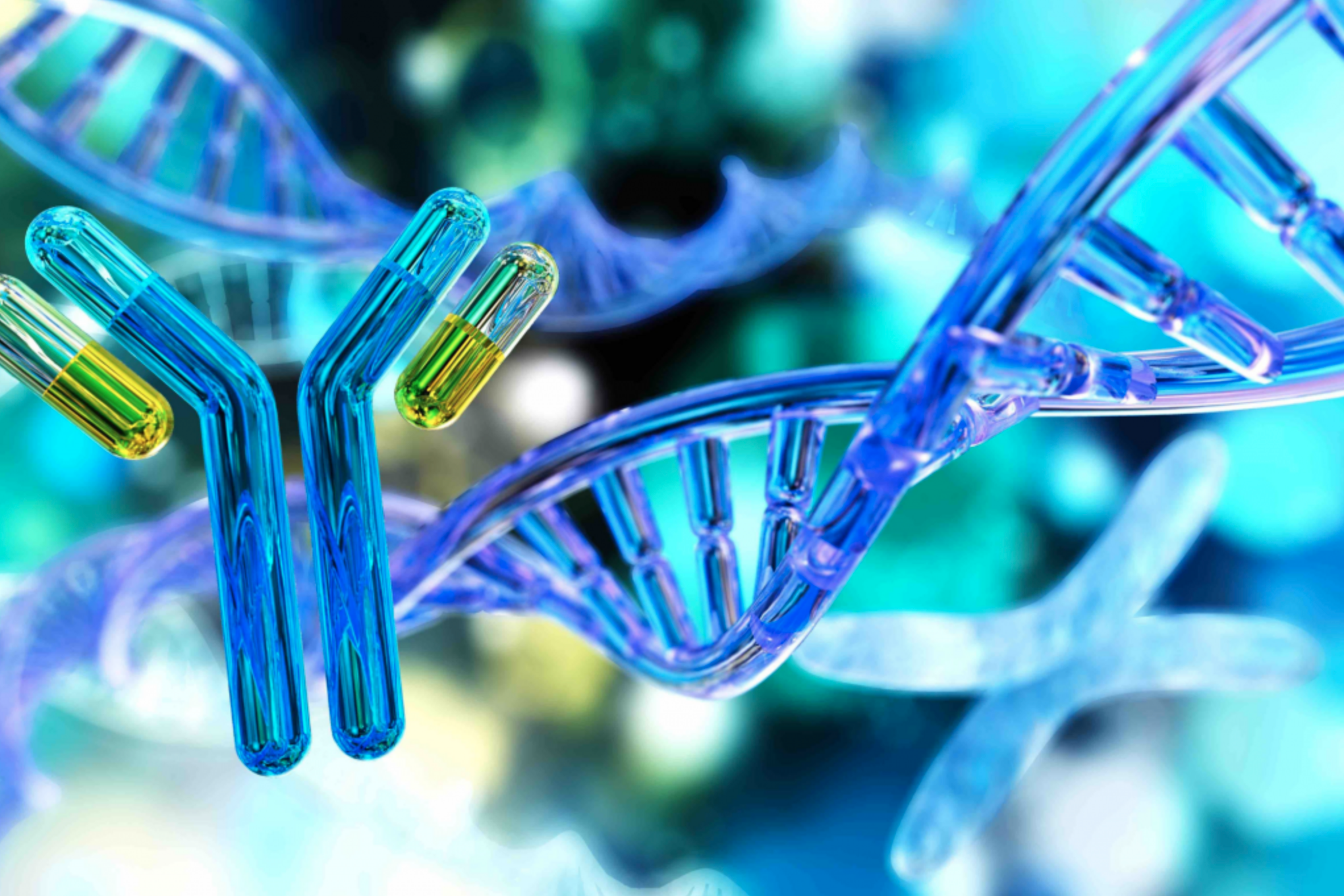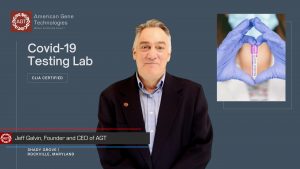
BioFactura is on Course to Become a Global Leader in Biosimilar Development
Since the approval of the first biosimilar drug in the United States six years ago, the market has rapidly expanded and is expected to grow to approximately $23 billion in the U.S. by 2027. And Maryland’s BioFactura anticipates it will be one of the companies at the forefront of this revolution of new medications.
Biosimilars are biologic products that are highly similar to a branded drug, but are always uniquely different in composition given the nature of biological development and production. Biosimilars offer similar benefits to those achieved from generic drugs, which are exact chemical replicas of branded drugs. Both offer a lower price point for patients, however treating physicians are also attracted to the use of biosimilar drugs because they are so similar to the original drug which makes them equally as effective, and available at a significant cost reduction, thereby increasing patient accessibility and overall positive outcomes.
“Biosimilar says it is not identical, but a close molecule that has no meaningful differences in how it works in the patients,” Dr. Darryl Sampey, President and Chief Executive Officer of BioFactura, said.
Biosimilar drugs have been widely available in Europe since 2006, but the U.S. Food and Drug Administration only granted the right to review and approve them when the Affordable Care Act was passed in 2010. The first biosimilar to receive approval in the United States was Sandoz’ Zarxio, which was approved in 2015. Zarxio is a biosimilar to Amgen’s Neupogen, a bone marrow stimulant for post-chemotherapy patients.
In the past six years since Zarxio’s approval, another 28 biosimilar drugs have been greenlit by the FDA. And that has meant that more prescribing physicians are turning to biosimilar treatments. In fact, Dr. Jeffrey Hausfeld, Chief Medical Officer and Chairman of the BioFactura Board of Directors, noted that the vast majority of physicians with Kaiser Permanente have turned to available biosimilars to treat patients and cut down on medical costs. Biosimilar use is expected to save consumers approximately $250 billion over the next several years. Health care giant Kaiser Permanente serves more than 12.5 million patients across the United States. By switching patients to biosimilar treatments, Hausfeld said that indicates a growing understanding among providers of the safety and efficacy of biosimilar products.
However, some of those biosimilar drugs have yet to reach market in the United States due to patent protections for the branded medications they are based upon. Biosimilar competition is becoming fierce as multiple companies are fighting for space to develop biosimilar therapies that will challenge traditional drugs manufactured by rival companies.
Frederick, Maryland-based BioFactura is among the many companies who are developing biosimilars to compete for this growing market, however; they have a competitive advantage that puts them ahead of the pack – StableFast, a proprietary platform for biosimilar drug development and manufacturing. BioFactura is using their platform to develop a biosimilar to Janssen’s Stelara, which is used to treat people diagnosed with Crohn’s disease, ulcerative colitis, plaque psoriasis, and psoriatic arthritis, in addition to several other branded drugs.
Dr. Sampey explained that the company’s StableFast platform allows BioFactura to develop biosimilar drugs “as close as you can analytically get to being an identical match to the branded product,” which he said gives the company advantage over competitors in the market.
A large majority of biopharmaceutical drugs are developed using the more widely adopted CHO cell lines, which are often easier to grow and manipulate. However, because the StableFast platform is designed specifically for stable NS0 cell lines for biopharmaceutical manufacturing, it gives BioFactura an even greater advantage in developing biosimilar drugs for a much less competitive niche of approximately 10 to 15 different branded drugs, Sampey said. This puts BioFactura in a position to become a dominant player within their target market of biosimilars.
“It’s a big market. Those products are a $25 billion market,” Sampey said. Stelara alone has a $10 billion market share.
Sampey said the StableFast platform, for which he is one of the inventors, was initially developed in 2005 to assist the company with the development of biological drugs as a means of biodefense for the Biomedical Advanced Research and Development Authority (BARDA). When biosimilar drugs began to emerge, Sampey said he and his colleagues took a close look at that class of medication. The NS0 platform has been used in the industry for 30 years which is advantageous for developing biosimilars because regulators have an intimate knowledge of the cell line used in other well-established products, Sampey added.
In 2020, BioFactura’s StableFast platform was granted new patents in the United States as well as Europe for improvements to its technology. New Multiplex Selection components provide the capabilities for concurrent selection strategies to be applied during stable cell line development. That leads to increased genetic stability and up to 10-fold higher specific productivity of biological products. The improvements allow for a faster recovery of cells used by this line, which not only means an improvement in the cell lines, but decreased cost of goods, a hallmark of successful biosimilar manufacturers.
Hausfeld, a retired surgeon turned entrepreneur who came to BioFactura after meeting with Sampey and learning about biosimilars, said the patent, which extends through 2030, is an example of how the innovations developed by BioFactura can lead to the development of better medications. He said the company is committed to developing high-value technologies that allow it to provide superior quality biosimilar medications that have unrivaled analytic comparability to the branded drugs. Ultimately, these technologies will increase patient accessibility, bend the overall cost curve downward, and improve the quality of life for millions of patients, he said.
Hausfeld also noted that the company is harnessing the power of artificial intelligence to boost its own scientific methods. Analytical machinery in BioFactura’s laboratory can look at the cell down to its lowest molecular weight in order to compare it to the reference product, meaning the branded drugs. Analytics are now so powerful and hi-res that it allows us to address the stringent regulatory hurdles for biosimilars, Hausfeld said.
Biosimilar drugs have been used by physicians longer in Europe than in the United States, and that number will increase with more biosimilar approvals and more physicians prescribing their use. Hausfeld noted there has been a 200% to 400% increase in the use of biosimilar drugs in Europe. And with that increase in Europe, as well as a wider market opening up in the United States, BioFactura will be well-positioned as a key player alongside larger pharma companies, such as Amgen, Pfizer, Teva, and Sandoz, a division of Novartis.
Earlier this year, BioFactura initiated a Phase I study comparing the pharmacokinetics of its Ustekinumab Biosimilar (BFI-751) to Stelara following a single subcutaneous dose. The study is also assessing the safety and tolerability of BFI-751 in 210 healthy volunteers, as well as their immune response. Stelara has been approved by the U.S. Food and Drug Administration for multiple indications, including Psoriasis, Psoriatic Arthritis, Crohn’s Disease, and Ulcerative Colitis. In addition to the advancements in their clinical biosimilars pipeline, BioFactura is executing on a $67 million BARDA contract for its SmallPox biodefense therapeutic. Their recent success has made BioFactura one of the fastest-growing biotech companies in Frederick, Maryland, and a company to watch in this space.





